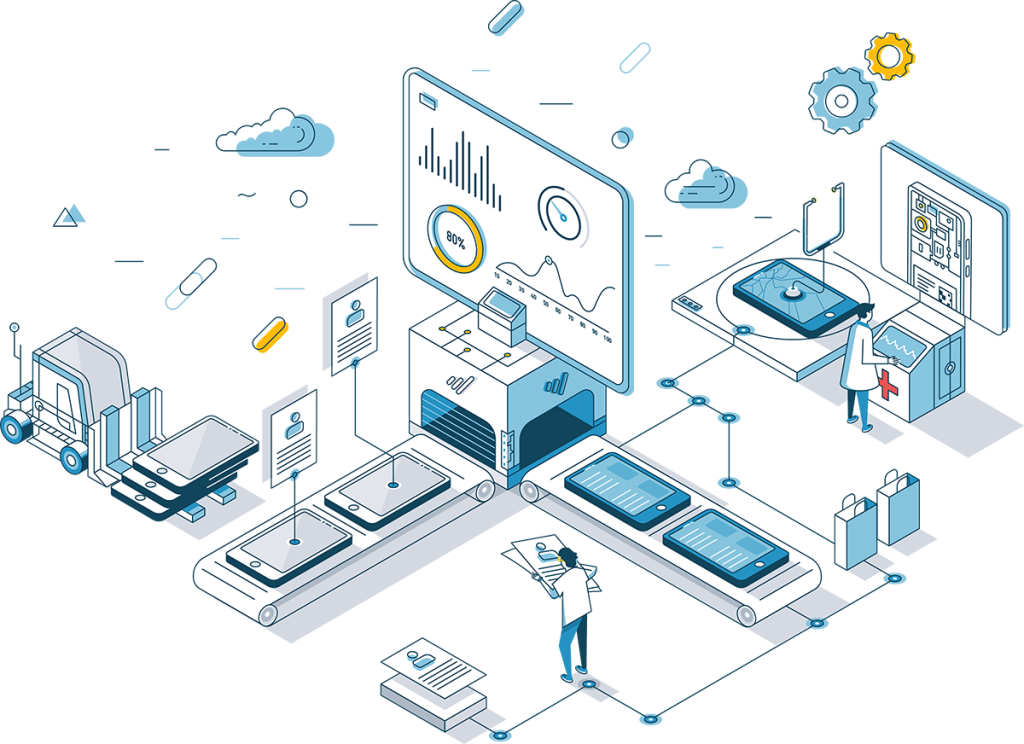The method we use to maintain and manage our devices in today’s workplace has changed dramatically. The old way of dispersing laptops in the office is no longer feasible in the modern workplace, since we have shifted to remote and hybrid working arrangements. Instead a more intricate procedure called Device Lifecycle Management was introduced. Managed Desktop Service is a vital element of this shift. It aids organizations to streamline processes, enhance end-user experiences, and ultimately lead to an increase in productivity.
Device Lifecycle Management (DLM), also known as DLM is the process of managing a device’s lifecycle beginning with its purchase until the time it’s decommissioned. This involves a number of procedures, such as procurement as well as provisioning maintenance and removal at the end the lifespan. While DLM was once a simple process in the traditional workplace, the remote work era has brought additional complexity and issues.

In this modern environment IT managers are now faced with the challenge of logistics and asset-management at every stage of a device’s lifecycle. This shift is driven by the desire to cater for the various requirements of remote and employees who are hybrid. It has become essential for companies to implement effective strategies. Managed Desktop Service is one of the most used.
Remote work can be enabled via Managed Desktop Services
Managed Desktop Service (or MDS) is a full-featured software solution designed to facilitate the management of end user devices. This service is an important resource for IT managers since it offers a holistic solution to manage device provisioning and maintenance. Here’s how Managed Desktop Service is helping organizations navigate the challenges of remote work:
Improved End-User Experience: A main purpose of Managed Desktop Service, is to enhance the user’s experience. It tackles common problems that remote workers encounter, such as poor repairs, slow setting up equipment, or lengthy upgrade times for software. MDS increases productivity and job satisfaction by making sure that employees are provided with all the tools and resources they need readily available.
Managed Desktop Service streamlines device provisioning for remote workers. With MDS organizations are able to efficiently provide laptops and other essential equipment to new hires, ensuring that they are equipped with the equipment they require right from the beginning. This will eliminate the frustration caused by employees waiting for their devices and enduring delays to begin their work.
Managed Desktop Service makes it easier for IT teams to patch and update software. It is able to schedule updates at periods that are not disruptive, which means employees do not experience interruptions when they are working on critical tasks. This helps reduce the risk of interruptions to employees in meetings or video calls.
Rapid Repairs and Replaces: In an environment where remote workers are working, timely repairs or replacements of equipment that is malfunctioning are essential. Managed Desktop Service providers often have strong support systems in place and ensure that employees get prompt assistance when their devices are experiencing issues. This reduces downtime, but also lowers the possibility of cybersecurity threats caused by the use of personal or unsecured devices in emergencies.
Cost-Efficiency: Organizations can lower expenses by outsourcing management of the device for the end-user to Managed Desktop Services providers. This approach eliminates the need for in-house personnel to handle task management for devices, lowers the chance of expensive interruptions caused by outdated equipment and improves the overall cost-effectiveness in managing the lifecycles of devices.
The impact on employee engagement and turnover
Employee engagement and retention are directly influenced by a smooth and efficient management of the lifecycle of devices. Employees who are dissatisfied by issues related to their device may lose interest or look for alternative opportunities. Inefficient DLM is a major influence on employee satisfaction.
In contrast, organizations who put their money into Managed Desktop Service (MDS) and a streamlined Device Lifecycle Management can create an enjoyable and positive work environment. Employees who have the proper devices and experience fewer disruptions tend to stay with their employer. This will reduce turnover, as well as the associated costs of recruitment and training.
Cybersecurity risks: How to mitigate them
Security is an important concern for organizations in the age of remote working. Without proper management of devices, employees may resort to using their personal devices or those that are not secured that could pose serious dangers to data and network security.
Many Managed Desktop Service providers have robust cybersecurity protocols in place. They are able to make sure all devices are updated with the latest patches, and that data is protected and encrypted. This proactive approach towards cybersecurity can help organizations minimize risks and provide a secure remote working environment.
The final sentence of the article is:
As the work environment is constantly changing the significance of efficient Device Lifecycle Management and Managed Desktop Service cannot be overstated. These are vital services for businesses that are looking to transition to the new hybrid and remote working. In this new age of work focused on enhancing end-user experiences, streamlining device provisioning and improving cybersecurity, businesses can improve their productivity while reducing turnover. They can also create a safe and engaging workplace. It’s more than just keeping up with the times but also about creating an efficient and competitive future.